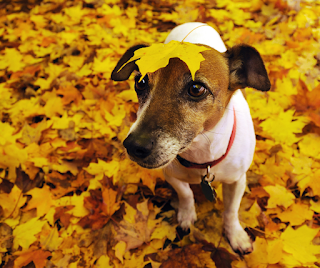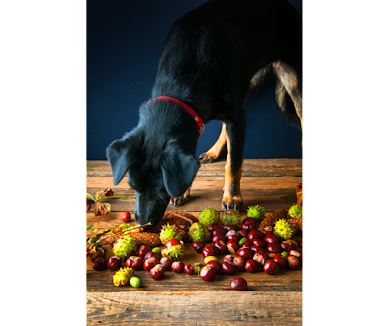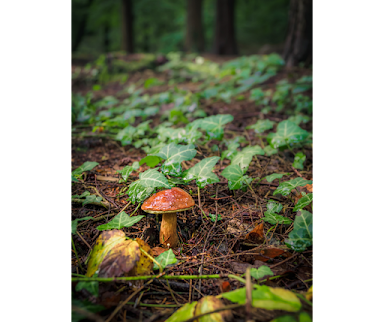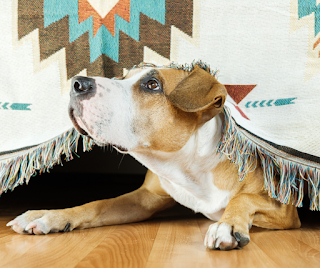10 Autumn Dangers For Your Dog
10 Autumn Dangers For Your Dog
1. Conkers
Conkers are also known as Horse Chestnuts and they can be dangerous for your dog if they are ingested. Not only do they grown in prickly cases, which can stick into your dogs paws and skin, the conkers themselves contain a chemical called Aesculin. This can be toxic when consumed in larger quantities. Conkers can also cause internal obstructions as well, so it is important to seek veterinary advice if you suspect your dog has eaten any.
2. Mushrooms
The damp, darker autumn days encourage mushrooms and other fungi to grow. Although not all mushrooms and fungi are poisonous to dogs, there are some that are, so it is best to keep them away from all kinds of them. If they do manage to eat some, it is best to seek veterinary advice.
3. Acorns
Acorns contain Tannins, which can cause stomach upsets if your dog eats them. They can also cause intestinal blockages, particularly in smaller dogs. Signs of illness include vomiting, collapsing, and diarrhoea which usually present themselves within a couple of hours of your dog eating the acorns. You should contact the vets if you suspect your dog has eaten acorns.
4. Chocolate
This is not just specifically an autumn hazard, but there does tend to be an increase in sweets and chocolate around the Halloween season. Chocolate contains Theobromine which is extremely toxic to your dog. Even eating small quantities of chocolate can be very dangerous so veterinary treatment is essential. The Theobromine levels in dark chocolate is higher than milk or white chocolate, so this makes it even more vital to seek treatment quickly. Many sweets contain Xylitol, an artificial sweetener that is also poisonous to your dog. So be sure to keep sweets and chocolate out of their reach at all times.
5. Blue-Green Algae
Blue-Green Algae can be found on water and it is highly toxic to dogs. Ideal conditions for the algae to bloom quickly is when the weather is sunny and the water temperature is higher. If you suspect that water has a bluey/green coloured layer on the surface, make sure to keep your dog away from it. If they have been into water that may be contaminated, it is vital that you rinse them off as soon as possible and seek veterinary advice quickly to avoid serious illness. Stagnant pools of water can also cause gastrointestinal upsets, particularly if your dog drinks from them, so try and keep them away from these too.
6. Fireworks
Although fireworks are available all year round, they are certainly more common in the autumn months because of Bonfire Night. Fireworks can be absolutely terrifying for some dogs but there are steps you can take to try and help them through this period. There are natural remedies and veterinary medications available which can help your dog to feel a little calmer. It is also really important to make them feel safe and secure and to comfort them if they feel comfortable with you doing so.
7. Dark Nights
The darker mornings and night can also be hazardous to your dog, as visibility is poor. If you are walking your dog alone, it is a good idea to carry a torch to aid your visibility and ideally walk in areas that are lit by street lights as opposed to remote areas. Carrying a charged mobile phone is also essential in case you come into any trouble, then you can call someone for help. There are lots of high-viz and light up products available for both you and your dog, so it is definitely worthwhile investing in those too to keep you both safe in the dark.
8. Ticks
Although ticks can be found during most of the year, they seem to be particularly active in the Autumn and Spring months, so they have made it onto our Autumn hazards list. Ticks are known to carry and spread Lyme Disease, which can be fatal for your dog if left undiagnosed and untreated. Symptoms include a high temperature, lethargy, lameness, loss of appetite and swollen joints. Although these symptoms by themselves are not life threatening, Lyme Disease can cause kidney failure and other complex heart and neurological issues. If a tick does become attached to your dog, be sure to remove the whole of it, as they have a tendency to separate their bodies and heads, leaving the head to carry on sucking blood from your dog! Gross, but true! If in doubt, take them to your vet to have them removed.
Amaryllis, Autumn Crocus (pictured below), Chrysanthemums, Hydrangeas, Oleanders and Ragwort are all commonly found in the UK during the Autumn and Winter months. All of these plants are poisonous if your dog eats them and some only need to be consumed in very small quantities to have a negative effect. If you suspect your dog has eaten any part of the plants above, contact your vet straight away for advice. Even if you are not 100% certain what kind of plant they have consumed, it is always best to consult your vet as soon as possible to be on the safe side.
10. Fallen Leaves
Although leaves themselves are not dangerous for your dog, larger piles that have been stood for a while can quickly begin to rot down, releasing bacteria and mould. If your dog ingests these leaves, then it can cause them illnesses such as a diarrhoea and vomiting or even more serious issues. Unfortunately, there may be litter which has ended up in the leaves too, which could be sharp or cause injuries to your dog. There may also be hedgehogs or other creatures that have made their homes in them too, so it is best to keep your dog away from large leaf piles so as not to disturb them.
To keep up to date with my latest blog posts, you can sign up to my free mailing list here.
You can also follow me on Facebook by clicking here.













Comments
Post a Comment